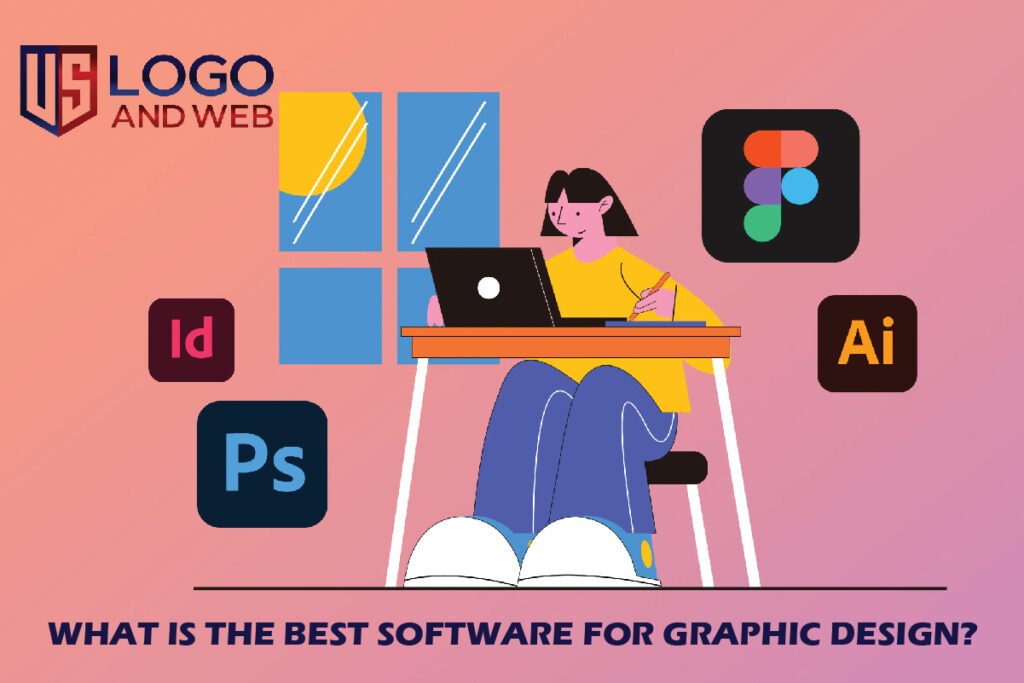If you’ve ever tried to create a logo, design a poster, or even make a quick social media post, you’ve probably asked yourself: What is the best software for graphic design? The truth is, there’s no one-size-fits-all answer. With so many graphic design tools available today, choosing the right one can feel overwhelming. Some are perfect for beginners who just want to test their creativity, while others are built for seasoned professionals who design for brands and agencies.
Graphic design software has evolved dramatically in recent years. Today’s programs don’t just let you draw or edit photos—they often come with advanced features like AI assistance, collaboration options, and cross-platform support. The good news? Whether you’re just starting out or you’ve been in the design game for years, there’s a tool out there that will fit your needs perfectly. Let’s take a closer look.
Adobe Illustrator: The Gold Standard for Vector Design
When people talk about vector graphic software, Adobe Illustrator is almost always at the top of the list. It has become a household name in design, especially for creating logos, branding materials, and detailed illustrations. Illustrator’s strength lies in its ability to scale artwork without losing quality, making it a professional graphic design software trusted by agencies worldwide.
But Illustrator isn’t just for professionals. Many beginners learn it because of its flexibility and wide availability of tutorials. If you want precision, advanced typography tools, and endless customization, Illustrator continues to be a strong choice. Of course, it’s not the simplest program to master, but if you’re serious about design, it’s worth the effort.
Adobe Photoshop vs Illustrator: Which One Should You Use?
This is a question many designers wrestle with: should you use Photoshop or Illustrator? Both belong to Adobe’s creative suite, but they serve different purposes. Photoshop is a raster graphic editor designed primarily for working with images. It’s excellent for photo editing, digital painting, and creating mockups. Illustrator, on the other hand, shines when you need vector illustrations, logos, or designs that require scaling.
Think of Photoshop as your go-to for working with pixels and Illustrator as your go-to for clean, sharp vector lines. Many professionals actually use both in their workflow, combining their strengths to create high-quality, versatile designs.
Exploring Free Graphic Design Software
Not everyone is ready to invest in a subscription. Thankfully, there are excellent free graphic design software options available. Programs like GIMP, Inkscape, and Canva have carved out a place for beginners and budget-conscious creators.
While free tools may not always have the advanced features of professional graphic design software, they’re perfect for learning the basics, experimenting with ideas, and even handling simple client projects. For example, Inkscape works well as software for vector illustrations, while Canva is a favorite for quick social media posts and branding templates.
AI Graphic Design Tools: The Future is Here
The design world is buzzing about AI graphic design tools—and for good reason. Imagine typing a description of a logo and seeing it generated in seconds. Tools like these are reshaping digital design software by making the creative process faster and more accessible. For a deeper look at how this technology is shaping the industry, check out how AI is revolutionizing digital marketing and web design.
Of course, AI doesn’t replace creativity. Instead, it complements it. Many professional designers now use AI features to brainstorm ideas, automate repetitive tasks, or enhance their workflow. If you’re looking for graphic design software with AI features, keep an eye on the latest updates in 2025—this area is growing quickly.
Cross-Platform and Collaboration-Friendly Tools
In today’s fast-paced world, design is rarely a solo task. Many companies need collaboration in graphic design software so teams can work together in real-time. Programs like Figma and Adobe XD are popular choices here. They allow multiple designers (and even clients) to give feedback instantly.
Another key factor is flexibility. Cross-platform graphic design software that works on desktop, tablet, and mobile ensures you’re never limited by your device. Whether you’re sketching an idea on your phone or polishing a logo on your computer, these tools adapt to your workflow.
Specialized Tools for Specific Needs
Not all design projects are the same, and that’s where specialized tools come in. If you’re focusing on software for logo design and branding, you might choose Illustrator or CorelDRAW. If your focus is animation, tools like Blender or Adobe After Effects bring your designs to life. For web design, Figma and Sketch remain top graphic design tools for creating sleek, modern interfaces.
And if mockups are your thing? There are plenty of programs that make it simple to create realistic product previews. The best software for creating mockups is often one that integrates seamlessly with your design workflow.
How to Choose the Right Graphic Design Software
With so many options, how do you actually pick the right tool? Start by asking yourself:
- Are you a beginner or professional?
- Do you need vector or raster capabilities?
- Will you be collaborating with others?
- Do you prefer free or professional graphic design software?
Your answers will guide you. If you’re just starting, graphic design software for beginners like Canva or Inkscape might be enough. If you’re building a career, investing in professional tools like Adobe Illustrator or Photoshop is a smart move. Remember, the “best” tool is the one that helps you achieve your goals most effectively.
Frequently Asked Questions (FAQs)
What is the best free graphic design software in 2025?
Some of the best free options include GIMP, Inkscape, and Canva. Each has unique strengths depending on whether you need photo editing, vector illustrations, or quick templates.
Which software is better for logo design?
Adobe Illustrator remains the top choice for logos, thanks to its vector capabilities. However, free tools like Inkscape also work well for basic logo projects.
Can AI really help in graphic design?
Yes, AI graphic design tools can save time by automating tasks and generating ideas. They don’t replace creativity but enhance it.
Is it possible to collaborate on design projects online?
Definitely. Tools like Figma and Adobe XD allow real-time collaboration, making them great for teams and clients working remotely.
How do I know if I need raster or vector software?
Raster editors like Photoshop are best for working with images and detailed effects. Vector software like Illustrator is ideal for designs that need to scale, such as logos or icons.
Final Reflections
Graphic design software in 2025 is more versatile than ever. From free tools for beginners to professional graphic design software used by agencies, there’s a solution for everyone. Whether you’re sketching a simple idea, collaborating on a web project, or exploring AI-powered creativity, the right software can make all the difference.
If you’re still unsure, experiment with a few tools before committing. Each has its strengths, and your workflow will determine the best fit. At the end of the day, what matters most is how comfortable you feel bringing your ideas to life.
At US Logo and Web, we believe that the right tools are only half the equation—the real magic comes from your creativity. So, choose a tool, start experimenting, and let your imagination guide you.

